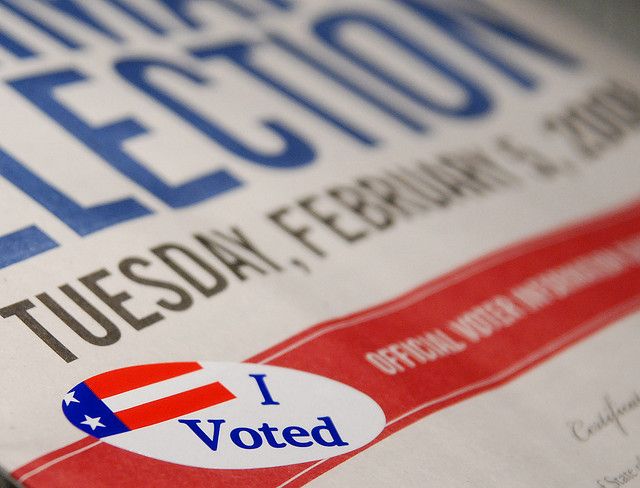Popular vote by 2020?

Denise Cross / flickr
Though it means nothing for 2016, the 2020 presidential election may be decided by popular vote — or at least that’s the timeline given by one of the main proponents.
As it stands now, there really is no national election for president, rather 51 elections (including Washington, D.C.), where electors are doled out by the states/D.C., with the winner needing at least 270 electoral votes.
But most states are a foregone conclusion. Would blue California really go for a Republican? Or would red Mississippi chose a Democrat?
In most instance, no chance, so that gives a disproportionate share of attention by presidential candidates to a relatively small group of states like Florida, Ohio and Virginia.
National Popular Vote is pushing to replace the current race to 270 with a simple majority of the popular vote. Bay Area campaign and election lawyer Barry Fadem, who is working with NPV, says this goal can be achieved by 2020.
How Close Are They, Really?
It may seem like a farfetched idea, but the movement is halfway there. Ten states, including California, have ratified the measure (D.C. has signed on as well). Once enough states have ratified the interstate compact to represent 270 electoral votes — a majority — the county will move to the popular vote.
Last week, the Arizona House of Representatives approved the measure. And although it hasn’t voted yet, two-thirds of the Arizona Senate are sponsors. And there are several other states where at least one chamber has approved.
The way the law is structured, the (Constiutionally-mandated) electors of the states that have ratified the compact would choose the candidate who won the popular vote. Therefore, states that didn’t sign on are free to not participate, but they wouldn’t have enough electoral votes to matter.
The theory is that these states would ultimately fall in line, as they’d then have no incentive to stay under the current system once a majority starts with the popular vote.
Why Go Through This Trouble?
Many voters are still upset that in 2000, Republican George W. Bush beat Democrat Al Gore for president by winning the Electoral College while losing the popular vote. While this is largely Democrats who are upset, supporters of the losing candidate would be sour in any similar situation.
“The disadvantages of the current system, of course, are first that you can have an election where the winner of the popular vote loses the election,” said Norm Ornstein, a resident scholar the right-leaning American Enterprise Institute. “It happened in 2000, without many repercussions, but the next time? Watch out.”
Swing states like Florida, Ohio and Virginia have a disproportionate influence on the general election. There are 12 or so states where candidates spend most of their time because the rest are viewed as forgone conclusions. According to NPV, no campaign events were held by the 2012 presidential candidates outside of these 12 states during the general election.
“Two-thirds of the states now are irrelevant, since they are firmly blue or red, giving all the focus to a small number of competitive ones and distorting the election,” Ornstein.
Downsides
Critics have said that a close election could result in a national recount (“take Florida in 2000 and multiply by 50, with a hundred times the number of lawyers,” said Ornstein), but that the federal government really isn’t equipped to handle a recount of that magnitude.
“The federal government does not conduct elections,” said Kyle Kondik, the managing editor of Sabato’s Crystal Ball, a non-partisan political publication from the University of Virginia’s Center for Politics. “So if there was an election that was so close a recount was required, it would have to be a 50-state recount. That sounds challenging.”
There’s also a concern that attention would shift from swing states to heavily-populated areas, like Los Angeles or New York City, on the theory that time-strapped candidates would plan visits to the densest areas to reach the most people at once.
But NPV contends that the densest cities still only make up a small part of the population. According to Census data, the 30 most heavily-populated cites account for only about 12 percent of the population — nowhere near a majority.
Is It Even Constitutional?
While something that fundamentally changes how the president is elected will likely be challenged in court, Fadem says “a Constitutional amendment is not required,” pointing to language in the Constitution giving each state the right to decide how to direct its electors.
Related Articles
Sacramento aims to police the police
After a politically punishing year for law enforcement departments from Los Angeles to New York, California legislators are riding the wave of controversy,
CEOs Rank CA Worst State for Business
MAY 5, 2011 By JOHN SEILER Once again, California garners the booby prize for business climate: For the seventh year
Accusations fly over volatile CA gas prices
In an unusual exercise of power, California lawmakers in the state Senate launched a preliminary probe into the recent spike in




